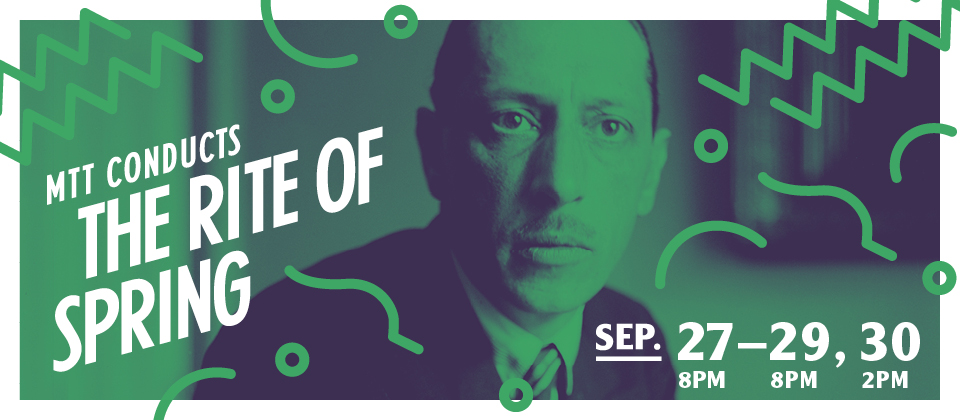
STRAVINSKY’S SUPER NOVA, REVIVED
If ever there was a super nova explosion to radically realign the orderly world of music, it was Stravinsky’s “Rite of Spring,” currently the focal point of the S.F. Symphony’s Stravinsky Festival. Over the past century, it has lost that sting originally setting off what’s called the biggest concert-hall riot in history. But it has lost none of its impact, bringing the audience to its feet, not clubbing nearby patrons as in the Paris world premiere, but this time cheering with gusto. The work is bigger than ever, and we revel in its savage dissonances portraying a primitive society and its arcane rituals.
The dazzling performance under Michael Tilson Thomas’ leadership will be reenacted next week on tour at New York’s Carnegie Hall.
Call it a Stravinsky dance program, without dancers. The bracing all-Stravinsky evening—why did I keep reaching for a seat belt again and again?—included also the earlier tremors of “Petrushka” as well as a virtuoso treatment of the Violin Concerto. All in all, the SFS covered itself in glory in a breath-taking program leaving both players and audience close to exhilarating exhaustion.
For sheer virtuosic demands, nothing could top the nonstop work for soloist Leonidas Kavakos in the compact Violin Concerto, where modernist Stravinsky turned back to inspiration from Bach and his structures like Toccata. Each movement begins with a finger-stretching eleventh chord (initially thought to be unplayable) to provide unity. The staccato rhythms had one clearly visualizing the NYC Ballet stepping smartly through it, in the later Balanchine choreography. And Kavakos emerged as indefatigable. With his long black hair reminding us of that one-time violin wizard Paganini, who was alleged to be diabolical, the Greek artist performed its rapid-fire intricacies and double-stops with ease.
With the street-carnival scenes “Petrushka” (in the slightly streamlined 1947 version) conveyed in musical complexity the milling, surging crowds of the ballet original. A famous borrower of material, the composer recycled various Russian folk tunes here. He had also heard an organ-grinder play a tune before his hotel and inserted it into the score—a bad move, as it was copyright protected, and for years Stravinsky had to make royalty payments at each performance by court order.
In his jarring masterpiece “Rite of Spring” (1913) he also borrowed various themes from an old Lithuanian hymnal. While not a great melodist, he excelled at rhythms and harmonic clashes, in spades. The sounds are exotic, from the opening ultra-high bassoon solo (Stephen Paulson) to the low English horn (Russ de Luna) to the soaring high E-flat clarinet (Luis Baez), with various ingenious blendings suggesting whole new instrumental groups. A true team effort that was quite unforgettable.
The overall sound level, with the robust brass section, is formidable. Various string players were wearing ear plugs to protect their hearing, downwind from the fortified brass section. It reminded me of the Richard Strauss quip: Before the first downbeat, already the brass is too loud!
The SFS played up the “festival” element the evening of Sept. 27, showing a film beforehand, and featuring both instrumentalists and dancers in the lobby spaces before the first curtain.
AFTERMATH—Believe it or not, that fateful “Rite of Spring” played a role many years later in changing US vice presidents. The ballet’s designer, Nicholas Roerich, was also a philosopher of a left-wing, Soviet-leaning bent, living later years in New York. He influenced our Veep, Henry Wallace, to such a degree that the Democrats arranged for a replacement in 1944, to an unknown Missourian named Harry Truman. In a matter of months, Truman became president. All because of Roerich and “The Rite of Spring.”
S.F. Symphony in the Stravinsky Festival Part Two, through Sept. 30, Michael Tilson Thomas conductor. Davies Hall, S.F. For SFS info: (415) 864-6000, or go online.